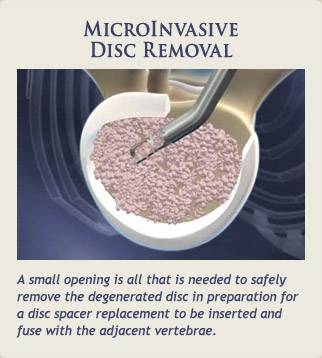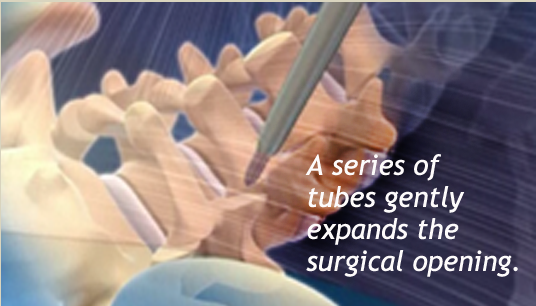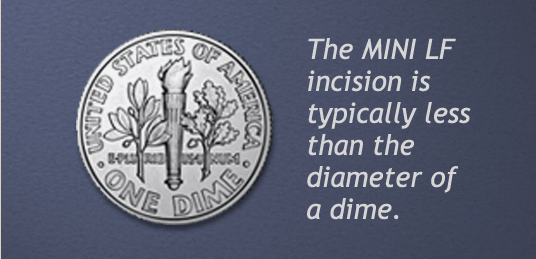
What is a MINI™ Lumbar Fusion?
The MINI (MicroInvasive Neuro Integration) Lumbar Fusion (LF) is one of four procedures that synthesize proven medical treatment and microsurgical instrumentation with the diagnostic expertise and experience of the neurosurgeons at Dallas Neurosurgical and Spine (DNS).
What conditions does the MINI LF treat?
When patients are properly diagnosed, which is a critical first step, the MINI LF procedure has proven to be a highly successful method of treating a broad range of spinal problems including degenerative disc disease, spinal stenosis (with or without spondylolisthesis) and scoliosis.
What makes the MINI LF procedure unique?
The MINI LF procedure fuses one or more discs of the lumbar (lower) spine together through one small incision. The procedure  is performed from the side, thus avoiding the major back muscles and is completed with very little disruption to the surrounding tissues.
is performed from the side, thus avoiding the major back muscles and is completed with very little disruption to the surrounding tissues.
One of the greatest advantages of the MINI LF procedure is the ability to restore disc height in a far less invasive manner than the traditional fusion.
Like all of our MINI procedures, the MINI LF begins with a small incision – typically 1.5 cm or smaller. A small tube is then placed over the disc space and with recent advances in neurologic monitoring, surgeons are able to safely navigate around the lumbar nerves in order to enter the disc space.
Once the disc space is exposed the procedure is performed using a microscope or endoscopically. After the disc is removed, a spacer made of PEEK, a thermoplastic, is then inserted into the disc space. 
A series of tubes gently expands the surgical opening. The MINI LF incision is typically less then the diameter of a dime.Surgeons monitor the sizing, positioning and correct placement of the spacer using real-time fluoroscopy or with an intraoperative 3-D scan. Like our other MINI procedures, the MINI LF typically results in very little blood loss, much lower infection rates and quicker recoveries.
What about the open ALIF procedure?
In the Anterior Lumbar Interbody Fusion (ALIF), the disc space is approached through the abdomen. For some patients, the procedure can be a reasonable alternative to the MINI LF. But it is one that should be carefully considered as there are more risks involved and recovery times are increased.
One advantage to the open ALIF is that, if needed, a larger implant can be inserted, providing better initial stability. However, the open ALIF procedure is significantly more invasive. A three-inch to five-inch incision is made on the left side and the abdominal muscles are pulled (retracted) to the side. Pain after surgery is far greater and patients typically stay in the hospital for several extra days or even longer for more extensive surgery.
How do I know if I’m a good candidate for the MINI LF?
If your spine-related pain continues to adversely affect your quality of life and you can no longer be effectively treated for pain, numbness or weakness through physical therapy, pain medications or epidural injections, we would encourage you to set up an appointment for an evaluation to see if the MINI LF procedure is right for you.
What results can I realistically expect after surgery?
The MINI LF procedure has brought improved outcomes in the world of spinal fusion surgery. Patients are typically walking within a few hours of the procedure and are routinely discharged the next day.
If you smoke, your body may not be able to get the proper nutrients to the discs in your back.
Unlike muscles, there is minimal blood supply to the discs so they lack reparative powers. If you smoke, you further aggravate the problem. In addition, a smoker’s cough may actually initiate back pain. Smokers in need of surgery are slower to heal. An essential part of an effective post-surgery regiment starts with a commitment to stop smoking.




